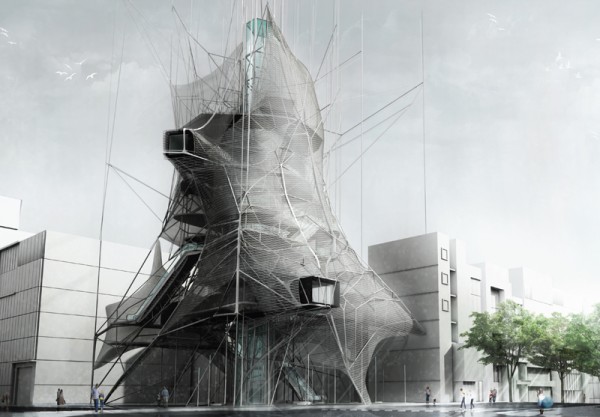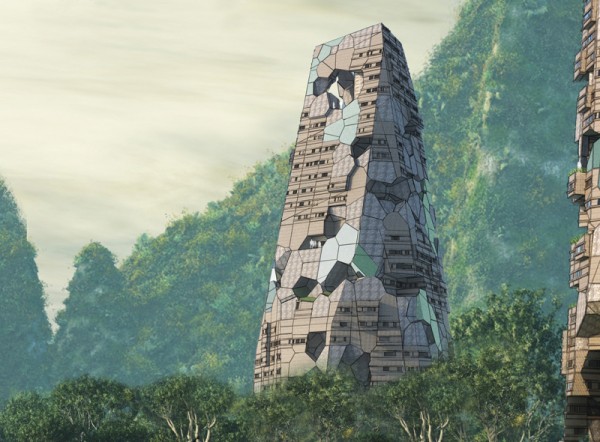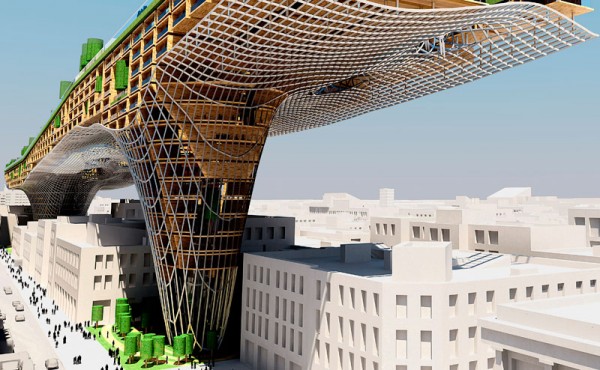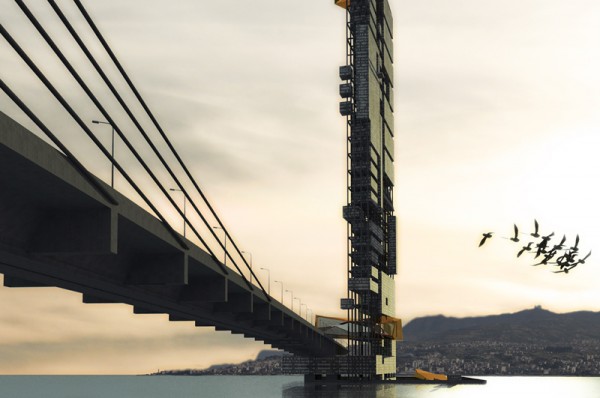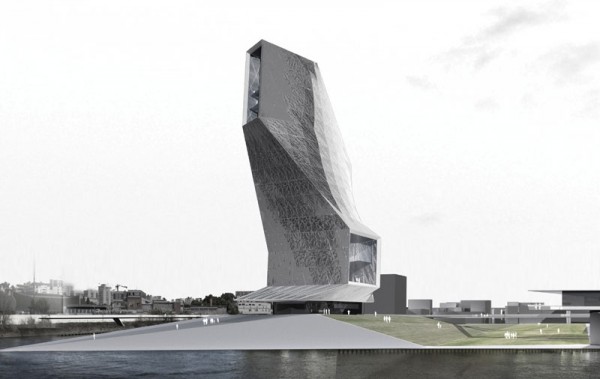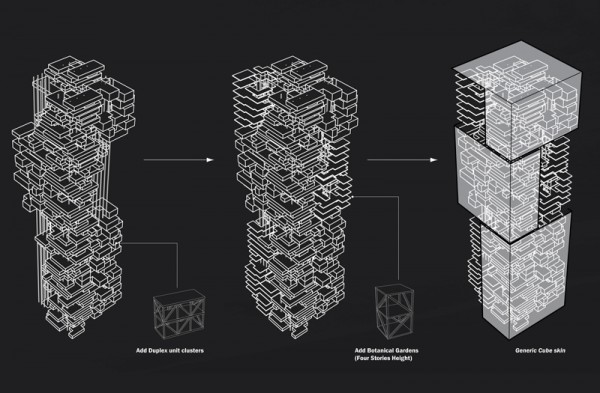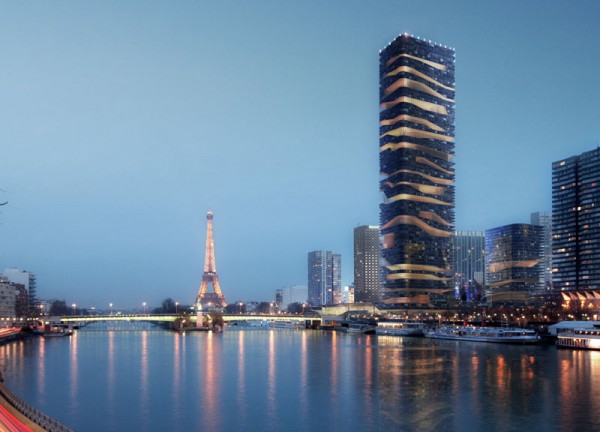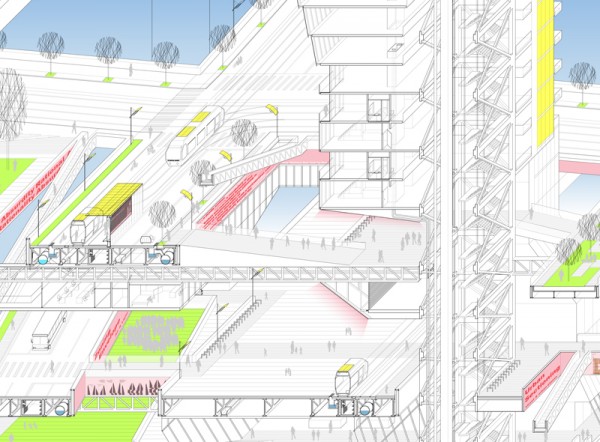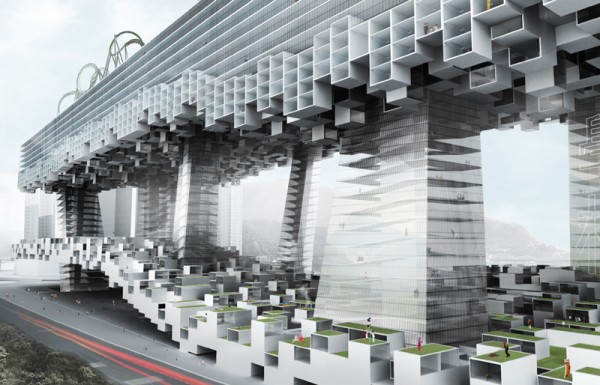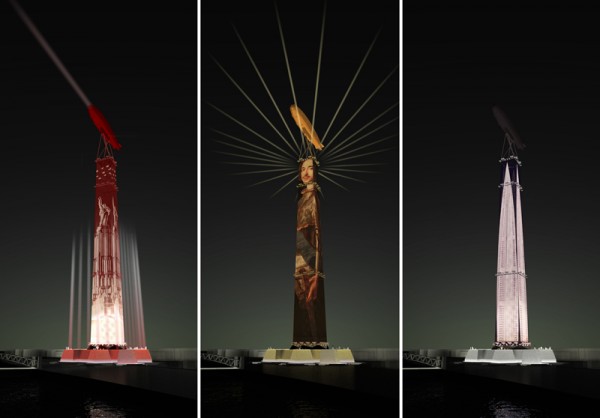Third Place
2010 Skyscraper Competition
Ryohei Koike, Jarod Poenisch
United States
The Nested Skyscraper adapts to climatic, urban, and programmatic conditions with the use of advanced materials and robotic construction. Its form and building method derive from the carbon sleeves and fiber-laced concrete performance. It is a composition of multiple layers of louvers which thicken and rotate according to solar and wind exposure.
The construction method consists of a series of robots that stretch a network of carbon sleeves that are sprayed with fiber-laced concrete to create a primary structure. A second set of robots wraps the structure with a steel mesh for lateral movements and increase or decrease its density according to structural and programmatic needs. The resulting structure of “nests” is a hybrid of compressive and tensile elements that frees the skyscraper typology from the rigid multiplication of floor plates.
This prototype was designed as a fashion boutique for Tokyo; a city of extreme climate, density, and earthquakes. It explores the use of advanced materials and robotic construction to re-imagine the skyscraper. Read the rest of this entry »

